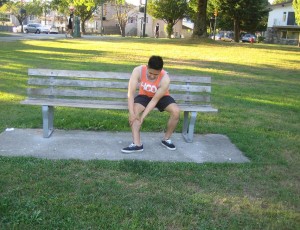The ankle joint is considered as a highly stable joint that functions as a hinge joint and should be able to support 1.5 – 8 times the body’s weight. The ankle joint is molded by the ends of the two leg bones specifically fibula and tibia to form a socket for the talus bone of the foot. Always bear in mind that the joint is held together by various ligaments that attach one bone to another. Remember that it is possible for these ligaments to end up damaged during an ankle sprain.
As a complex structure, the ankle joint is prone to ankle sprains which are the most common injury. This injury occurs once the joint ligaments are stretched and possibly torn, usually due to the twisting or turning over of the ankle. Sprains are more likely to develop during sports that involve side-to-side movement such as basketball or tennis but can also occur at any time during weight-bearing including walking.
What are the types and causes?

An ankle sprain is instigated by over stretching or tearing of a ligament while the joint is subjected to stress. An inversion sprain occurs when the ankle rolls out and the foot is turned under. This is considered as the most common type and instigates the ligaments on the exterior of the ankle to overly stretch and ripped.
An eversion sprain develops once the ankle turns interiorly while the foot rotates outwards, thus damaging the ligaments on the interior of the ankle. Once a ligament is torn during a sprain, there is an audible popping sound.
What are the symptoms?
The indications of a severe ankle sprain include bruising, pain and swelling which appear right after sustaining the injury. The individual will also experience inability to move the joint or bear weight on the affected side.
If a popping sound is heard right after the injury, it can indicate a torn or ruptured ligament. This popping sound is an indication of a severe sprain that might also include a fracture and requires proper assessment by a doctor.
Management
When it comes to severe cases of ankle sprains that include overly stretched or torn ligaments, it requires immediate medical care. In most cases, an X-ray is used to determine the presence of a fracture while an MRI is used to determine the location and severity of the torn ligaments.
Casts or braces might be required for 4-6 weeks while the sprain fully heals. Non-steroidal anti-inflammatory drugs (NSAIDs) such as ibuprofen can be given to reduce the pain and swelling. In case the pain is severe, crutches might be needed in order to limit weight-bearing. Surgery might be required in order to restore the torn ligaments.
Prevention
Right after treatment, physical therapy is required for strengthening the affected ankle. It is recommended to lose weight, perform proper stretching before exercise or sports and avoid the use of high heels and platform shoes. In case there is likelihood that the ankle is going to twist, orthotics might be needed to balance the foot or an ankle brace for stability to prevent sprains.
